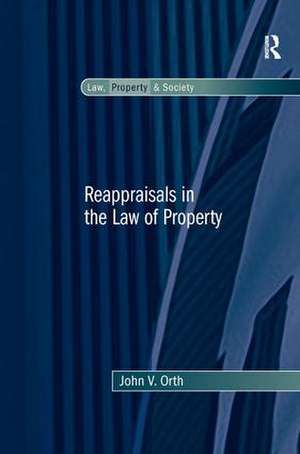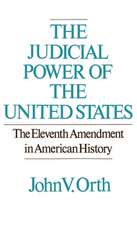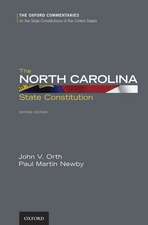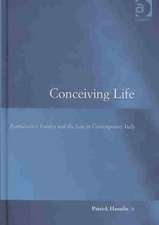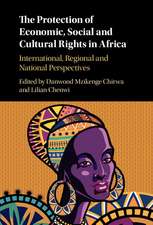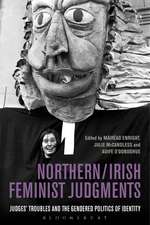Reappraisals in the Law of Property: Law, Property and Society
Autor John V. Orthen Limba Engleză Hardback – 28 iul 2010
| Toate formatele și edițiile | Preț | Express |
|---|---|---|
| Paperback (1) | 469.34 lei 6-8 săpt. | |
| Taylor & Francis – 16 noi 2016 | 469.34 lei 6-8 săpt. | |
| Hardback (1) | 1053.64 lei 6-8 săpt. | |
| Taylor & Francis – 28 iul 2010 | 1053.64 lei 6-8 săpt. |
Preț: 1053.64 lei
Preț vechi: 1284.93 lei
-18% Nou
Puncte Express: 1580
Preț estimativ în valută:
201.61€ • 211.26$ • 166.67£
201.61€ • 211.26$ • 166.67£
Carte tipărită la comandă
Livrare economică 11-25 aprilie
Preluare comenzi: 021 569.72.76
Specificații
ISBN-13: 9780754677314
ISBN-10: 0754677311
Pagini: 172
Dimensiuni: 156 x 234 x 11 mm
Greutate: 0.42 kg
Ediția:1
Editura: Taylor & Francis
Colecția Routledge
Seria Law, Property and Society
Locul publicării:Oxford, United Kingdom
ISBN-10: 0754677311
Pagini: 172
Dimensiuni: 156 x 234 x 11 mm
Greutate: 0.42 kg
Ediția:1
Editura: Taylor & Francis
Colecția Routledge
Seria Law, Property and Society
Locul publicării:Oxford, United Kingdom
Notă biografică
John V. Orth is the William Rand Kenan, Jr. Professor of Law at the University of North Carolina School of Law. His many books on subjects in law include How Many Judges Does It Take to Make a Supreme Court? And Other Essays on Law and the Constitution (University Press of Kansas, 2006) and The Judicial Power of the United States: The Eleventh Amendment in American History (Oxford University Press, 1991).
Recenzii
'For several years now John Orth has been writing a series of essays that have brought various old property doctrines to life. He has now collected these essays and added to them in this wonderful new book. In his hands the Rule in Shelley's Case, easements, and escheat come to life. Orth adds to these old chestnuts his insights on what forces have driven property law's development. Throughout all of the chapters Orth displays his characteristic wit, modesty, and immensely readable style.' Gregory S. Alexander, Cornell Law School, USA 'Reappraisals is a brilliantly playful examination of property doctrines that in less skillful hands might seem arcane. Leases, covenants, joint tenancies, and a dozen other property concepts have never been so much fun.' James Lindgren, Northwestern University, USA 'The author touches upon some fascinating questions on the role of property and how our concept of property is constructed... Orth's Reappraisals in the Law of Property achieves the distinction of providing a springboard for a host of debates and discussions about the nature of law in society, which must surely be the primary aim of any writer.' Cambrian Law Review 'Reappraisals in the Law of Property is well crafted and written... It addresses the real guts of property law as examined by academic law professors. Orth does a good job making the problems real, showing how practicing lawyers face the reality of these problems.' Law and Politics Book Review 'Reappraisals in the law of Property is well crafted and written... It addresses the real guts of property law as examined by academic law professors. Orth does a good job making the problems real, showing how practicing lawyers face the reality of these problems.' Law and Politics Book Review
Cuprins
Preface; Introduction; Part I Getting Down to Cases; Chapter 1 Finding: Asking the Wrong Question; Chapter 2 The Rule in Shelley's Case: Staying Too Long; Chapter 3 Joint Tenancy: Accounting for Continuity; Chapter 4 Tenancy by the Entirely: Adapting to Change; Chapter 5 Leases: Misled by a Simile; Chapter 6 The Burden of an Easement: Playing a Word Game; Chapter 7 Covenants of Habitability: Doing the Right Thing; Chapter 8 Escheat: Picking Up the Pieces; Part II Driving Forces; Chapter 9 Intention: The Law of Unintended Consequences; Chapter 10 Competition: The Race to the Bottom; Chapter 11 Fiction: Pious Fraud; Chapter 12 Labels: Argumentative Jargon; Chapter 13 Second Thoughts: Full Enlightenment?; Chapter 14 Afterword;
Descriere
This book offers a broad examination of the forces that have made and continue to remake the law of property. Three themes in particular - the inertial force of tradition, the reforming power of judicial and legislative activism, and the challenge of academic criticism - form the foundation of this challenging work, which demonstrates both property law’s enduring consistency and the unique and often drastic ways in which it has evolved in the modern era.
